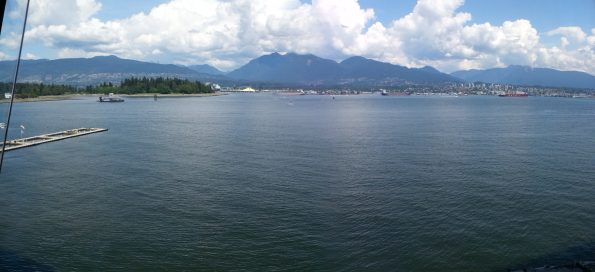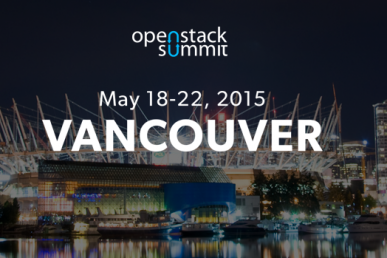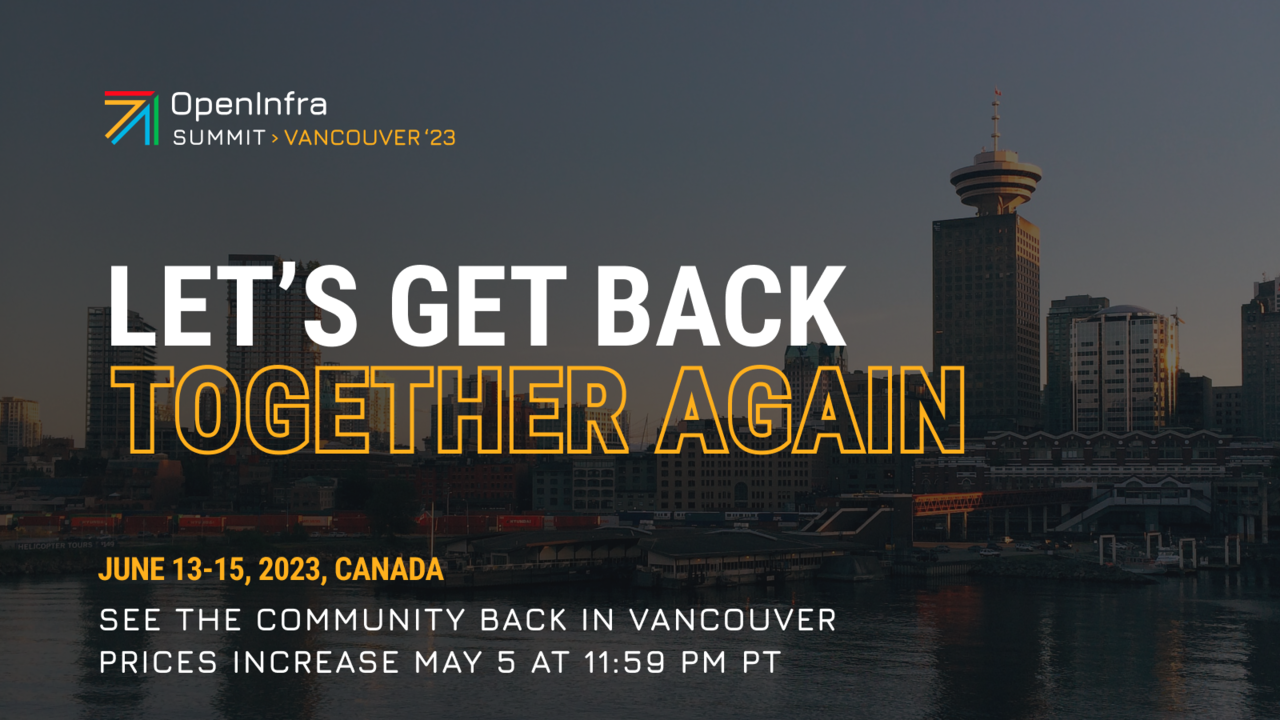The 2015 OpenStack Summit Vancouver was one of my favorites. Besides the obvious beauty of the water and mountains, there’s so much to see in this “Canadian Manhattan.” Much like the diversity of the OpenStack community, Vancouver reflects its rich past with influences from India, China, Japan as well as its sibling states in the U.S. Pacific Northwest. The result of this influence is a veritable cornucopia of food and lifestyle options in the city — I like to think of Vancouver as one of those cities that personify the OpenStack project and community.
Vancouver was also my very first North American OpenStack Summit. I remember being apprehensive about meeting the people that I’d only been rubbing virtual elbows with online. Even though I’d been working with OpenStack for over a year, I had never been involved with the larger OpenStack community. Suddenly, here I was in Vancouver, ready to take part in a summit with thousands of like-minded OpenStack aficionados.
Even with over a year of OpenStack under my belt, I still felt like an amateur before the summit. So I sought some guidance online to help me navigate the event. Some of the resources I found were published right here on Superuser (surprise!). Articles like “Making your list and checking it twice for the OpenStack Vancouver Summit” that outlines planning, packing and arrival information for Vancouver were invaluable in preparing me for the logistics of travelling to Vancouver. Today, just like in 2015, there are already similar articles being published here on Superuser. Some are even about specific topics like, “What’s new at the Vancouver Summit” and Must-see sessions at the Vancouver Summit that give readers some good suggestions about the general direction and even specific sessions to see.
“Wearing your 6-inch stilettos or funky pointed-toe Florsheim’s might leave you in flip flops by Tuesday”
However, even after reading everything I could get my hands on before the summit in 2015, I still remember feeling overwhelmed by all the sessions and the check-in process and deadlines. So let me give you some suggestions to help you relax and get the most out of your OpenStack Summit in Vancouver.
General tips
- Register early. Typically there’s plenty of time to register prior to the Monday morning rush. If you’re like me, you don’t like standing in lines. Tear yourself away from snapping pics of the beautiful vistas, check-in, and get that OpenStack badge early!
- Pick your sessions in advance and adjust at the conference. Go to the Summit Schedule and choose the sessions you really want to see first, then schedule the ones you are just curious about next. Get to sessions early, some fill up fast. Migrate to the center of the room if you don’t want standing room attendees breathing on you from the aisles.
- Don’t schedule every single day with back-to-back sessions. Listen, I know you’re excited and don’t want to miss a single session, I get it. However, if you don’t schedule some downtime during the day (and no, lunch is “a” break, not “the” break), your brain will feel like butterscotch pudding by the last session and you’re not going to retain anything. Be nice to your brain.
- Hydrate. Hydrate. Hydrate. Most conference centers do a great job of having water available in strategic areas, but a lot of times they aren’t exactly close-by. I recommend bringing a water bottle of your own and keeping it filled throughout the day. The brain needs water to function and I guarantee you’re going to be using the ol’ noodle a lot.
- Wear comfy shoes. You’ll be walking a lot at the OpenStack Summit and afterwards. I routinely do 12-20,000 steps each day of the Summit. So if you look at your Fitbit right now and you’re only clocking in about 3,ooo steps a day, you’ll understand why wearing your 6-inch stilettos or funky pointed-toe Florsheim’s might leave you in flip flops by Tuesday.
- Get out of your hotel room. There are plenty of parties and gatherings in the evening at every OpenStack Summit and Vancouver will be no different. Attending some of these events is a great way to see the city, plus it’s an excuse for a walk down to historic Gastown, an area chock full of eating and people-watching opportunities.
Tips for beginners
- In the Summit Schedule, use the filter button that allows you to see only beginner sessions. I remember looking them when I was a rookie and wondering if everyone had a different definition of “beginner.” Find some sessions that appeal to you and give them a try. If they’re too far over your head, use your mobile device to immediately find another session and head over there. No one expects you to be an expert, these Summits are for everyone. As a primer on OpenStack, check out my Sydney session on YouTube entitled “OpenStack for Absolute Amateur” it will get you well on your way to understanding the other sessions.
- Talk to lots of people. I made the mistake my first Summits by not getting involved in the hallway conversations. They’re the best source of what’s really going on out there and what people are doing with OpenStack. OpenStack people are some of the friendliest I’ve ever met, don’t be afraid to be a joiner.
- Ask questions. There are some really knowledgeable people at the Summit and it’s one of the few opportunities where you’ll get them all in one place. Plus, there are lots of operators, engineers and developers in attendance. So no matter what the question, someone will have the answer or will be able to point you in the right direction.
- Get involved. There are so many ways to get involved with OpenStack, including contributing code. There will be a lot of OpenStack Ambassadors available as well folks from the User Group community who would love to talk to you about what they’re doing in your city or town. Check out the Summit schedule for community events where you’ll run into them.
- Is AWS your thing? No problem. If you’re coming to OpenStack from AWS or from any other cloud provider, you might enjoy my session on OpenStack for AWS Architects. It will present a Rosetta Stone approach to translating AWS products to OpenStack projects and how the two stack up.

A view of Vancouver. Photo: Ben Silverman.
Intermediate and advanced tips
- Expand your mind. Now that OpenStack has matured, the OpenStack Foundation is moving into some other interrelated areas. Some of these areas like edge computing, Kata containers and other open-source container technologies. I would recommend branching out to some of the sessions in these new areas, they are very exciting talks and on the edge (pun intended) of cloud technology.
- Bigger and better. OpenStack at scale has always been a favorite topic at the summit. But what happens when you start combining it with hybrid and multi-cloud architectures? What about cells now that they are a mandatory part of Nova? How do container technologies play a part in this? Good news for you, there are sessions for all of those questions. Get them on your schedule now!
- Calling all telco/NFV fans. If you’re a service provider and telco/NFV OpenStack fanboy like me, you’re going to have a great week, there are over 40 telco/NFV sessions scheduled. You can hear sessions about everything from 5G, Edge, and autoscaling, VNF service chain orchestration to Ceph in Telco clouds.
Regardless of your experience level, you must do one thing: enjoy yourself in Vancouver and relax. Admittedly my last summit in Vancouver was anything but relaxing — and I’ve always regretted my high-strung activities in such a beautiful place.
Therefore, this year, I plan on relaxing before and after my session. My wish for all attendees is that they have fun, learn as much as they can (comfortably!) and get some time to unwind and process what they’ve learned throughout the week. I’ll be there all week, so if you see me staring out the enormous windows of the convention center overlooking the water, please come over say hello. It might just remind us both to relax and take in the beauty of this City of Glass.
About the author
Ben Silverman is the Chief Cloud Officer for OnX. He considers himself an international cloud activist, and he’s also co-author of the book “OpenStack for Architects.” Silverman started his OpenStack career in 2013 by designing and delivering American Express’ first OpenStack environment, worked for Mirantis as a senior architect and has been a contributing member of the OpenStack Documentation team since 2014. He’s also written for Superuser on how to get a job with OpenStack.
Superuser is always interested in community content, get in touch at editorATopenstack.org
Cover Photo // CC BY NC
- Return to the City of Glass: A guide to the Vancouver OpenStack Summit - April 18, 2018
- Careers in OpenStack: What employers want - October 11, 2017

)










